8 Ways to Express Your Art Nouveau Style
Although short lived, the art nouveau movement still leaves an imprint on design today. From the late 19th century until the early 20th century, artists and designers developed this style of architecture, decorative arts and fashion, incorporating sweeping, feminine shapes. The movement aimed to be completely original, not mimicking anything from the past.
While the art nouveau style was acclaimed in the beginning, its popularity quickly waned. Critics accused it of being overelaborate, expensive and lavish. The movement that followed, Arts and Crafts, addressed many of these criticisms.
Despite this, art nouveau's beauty is undeniable and is still appreciated today. Whether you’re looking to truly embrace this look or just add a touch or two, here are eight ways to work art nouveau style into your home.
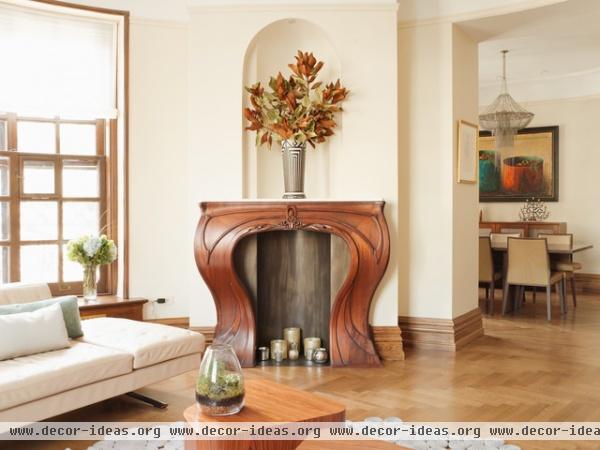
1. Carved wood. Art nouveau artists, designers and craftsmen rejected traditional influences, moving their designs toward an original and more modern style. In the home, intricate carvings from the Victorian era gave way to a more curvilinear look, with sinuous lines and nature-inspired motifs.
Get this look: Replicate the style with an updated twist by adding moldings to newer furniture. Search your local hardware store for trim pieces and apply them to flat surfaces on tables, dressers or frames. Feeling really adventurous? DIY veterans can trace an art nouveau motif onto wood and use a Dremel kit to carve out the details for an authentic period look.
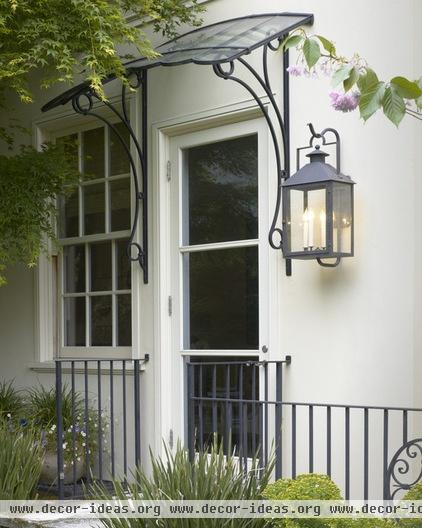
2. Metalwork. The art nouveau style was quickly adapted for decorative ironwork and cast metal, where its undulating, asymmetrical and organic lines found favor with wealthy homeowners.
Get this look: Whether their work is custom or prefab, ironwork professionals often offer art nouveau–style options for the home. Look for brackets, railings, gates and other architectural details. If you’re short on money, look for salvaged elements, which are often more affordable. Consider using an antique gate for a headboard or a piece of wall art.
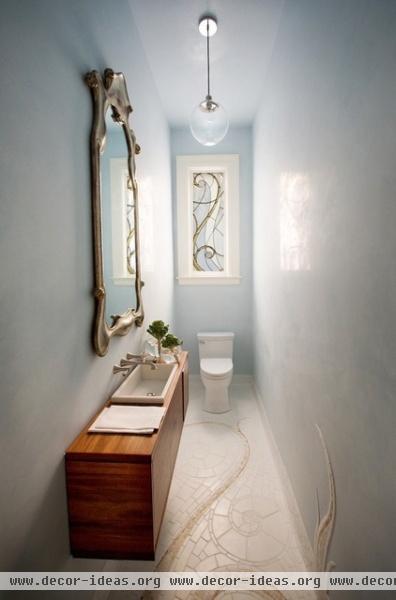
3. Stained glass. Artist Louis Comfort Tiffany helped bring art nouveau stained glass to mainstream interiors during this period. His curving, sinuous designs adorned windows, lamps and other lighting fixtures.
Get this look: It's easy to think of stained glass as a traditional feature, but in the right application, it can work beautifully in modern and contemporary interiors. Look for the curving lines of art nouveau and use the stained glass in limited applications — like for a light fixture or a window, as in this bathroom.
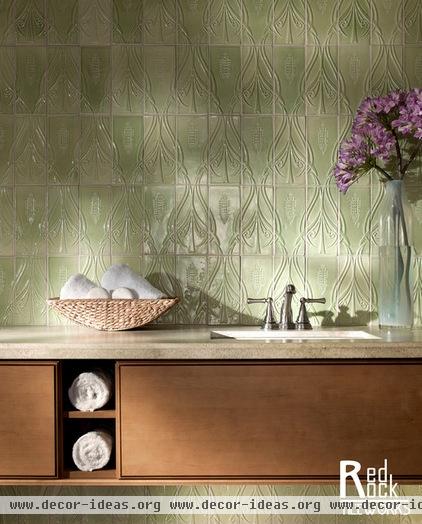
4. Tiles. The latter half of the 19th century saw a decline in tile manufacturing. Compared to wallpaper, tile was expensive and difficult to install. But the material's popularity resurged in the 20th century. Molded tiles with art nouveau motifs became readily available and more affordable.
Get this look: Art nouveau–style tile works well in modern and traditional homes. Don't feel like you need to put up an entire wall of tile — small quantities can have a powerful effect when used wisely. Pick out a few for a border accent inside or outside your home.
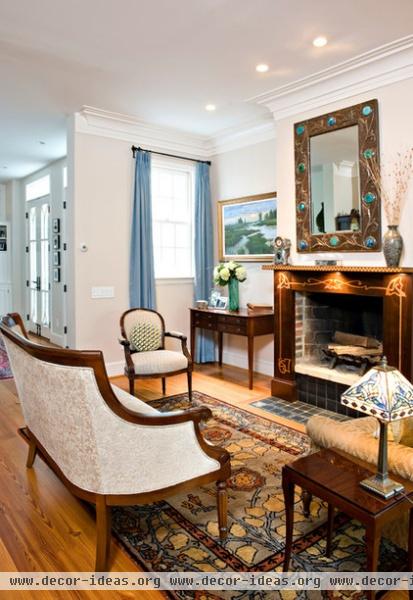
5. Textiles. Although art nouveau was lavish, it was often inspired by nature. Original art nouveau textiles usually incorporated flowers and vines in printed or woven designs. In both muted and dark color palettes, these textiles included rugs, upholstery and window treatments.
Get this look: Textiles can help you add just a touch of art nouveau or complete a top-to-bottom makeover. Look for nature-inspired textiles, pillows or upholstery in muted color palettes with curving, wavy lines. If you’re seeking an unconventional way to work with fabric, try hanging framed panels as artwork or even covering an entire wall.
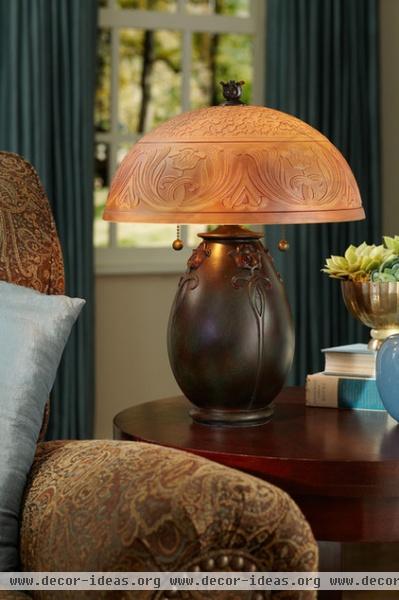
6. Lighting. Art nouveau stained glass pendants, iron chandeliers, leaded glass lanterns and acid-etched lampshades all reflected the elaborate and organic-inspired patterns of the era. Mixed materials — usually metal and glass — were combined in feminine forms.
Get this look: Most decorating schemes can accommodate a touch of nouveau-inspired lighting. You don't need to choose traditional or antique pieces to get the look. Sconces, pendants, chandeliers and table lamps with just a touch of curved iron or acid-etched glass can suggest art nouveau style with a more modern touch.
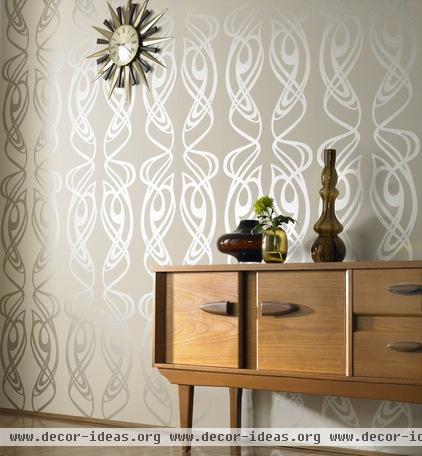
Diva Wallpaper, Beige - $85 » 7. Wallpaper. More affordable and accessible than tile, wallpaper was a popular fixture in homes during the art nouveau period. Palettes could be bold or muted, all in the rhythmic patterns of the era.
Get this look: You don't have to go far to find great art nouveau–style wallpaper today. The graceful lines are a popular look with most major retailers.
Don't rule out wallpaper if you don't want the wall-to-wall look. Consider using it on a single accent wall, as matting for artwork, behind a collection of mirrors or as a treatment under a chair rail.
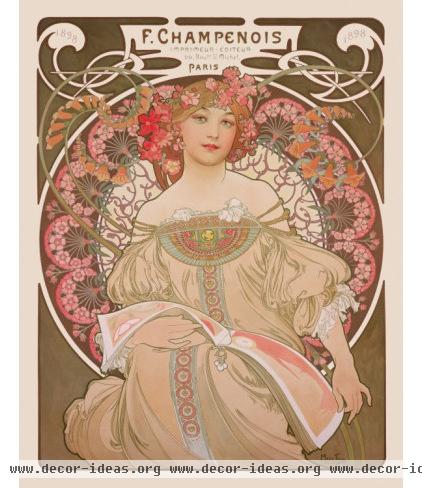
Reverie Print, circa 1897, by Alphonse Mucha - $35.99 » 8. Artwork. Printed pieces are a signature of the art nouveau style, as it was the first design movement to mass produce graphics for advertisements, labels, posters and magazines. Many of these printed pieces are available today in vintage and reproduced forms.
Get this look: Check out swap meets, art fairs and antiques shops for some great vintage finds. Reproductions are readily available, too.
If you’re looking to make a bolder statement, find a large art nouveau–inspired stencil to apply all over your wall or ceiling.
More: Art Nouveau Style Creates Verve With Curves












